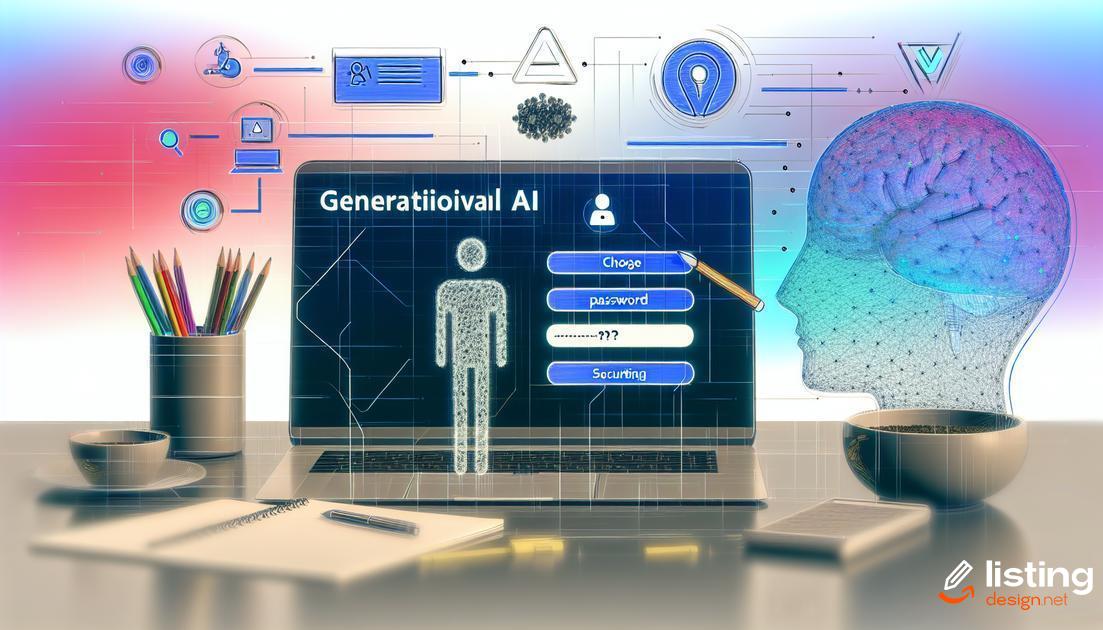Are you ready to unlock the full potential of Amazon Generative AI? Understanding its capabilities can lead to a significant boost in productivity and innovation. Whether you are setting up your account or integrating it with existing tools, we’ve got all the tips you need. Keep reading to discover how to leverage key features, avoid common pitfalls, and stay ahead of future trends.
Table of Contents
Understanding Amazon Generative AI
Amazon Generative AI is a breakthrough technology that leverages machine learning to generate content, simulate products, and more. Understanding its core capabilities is essential for effective utilization. Amazon’s generative models can create text, images, and other data formats, making it a versatile tool in various applications.
Key Features
- Scalability: Leverage massive computational power to handle large data sets.
- Accuracy: Achieve high fidelity in generated content, from text to complex simulations.
- User-Friendly: Intuitive interfaces make it accessible to both beginners and experts.
Moreover, Amazon’s AI models are continually improving, thanks to ongoing research and updates, ensuring that you always have access to state-of-the-art technology. Understanding these elements will help you make the most out of Amazon Generative AI.
Setting Up Your Amazon Generative AI Account
To begin using Amazon Generative AI, you need to set up your account. Start by navigating to the Amazon Web Services (AWS) Management Console. Sign up for an AWS account if you don’t already have one. After logging in, locate the Amazon Generative AI service in the AWS services menu.
Configuring Account Settings
Once inside the service dashboard, you’ll be prompted to configure your account settings. Ensure that you choose the right AWS region to minimize latency and enhance performance. Set up billing options by linking your preferred payment method. This step is crucial to prevent any disruptions in service.
Setting User Permissions
Next, manage user permissions by going to the IAM (Identity and Access Management) service. Create roles and groups to allocate different levels of access to team members. This helps in maintaining secure and organized access to the generative AI functionalities.
API and SDK Integration
To fully utilize Amazon Generative AI, integrate it with your existing applications using Amazon’s APIs and SDKs. Generate your API keys and secret access keys from the IAM management console. Store these keys securely, as they are essential for authentication and making API requests.
Testing Your Setup
Before you start working on production data, it’s crucial to test your setup. Use sample data to validate that your configurations are correct and the AI services are performing as expected. This step will help you identify and correct any potential issues early on.
By following these steps, you ensure that your Amazon Generative AI account is properly set up, allowing you to leverage its full potential securely and efficiently.
Integrating Amazon Generative AI with Existing Tools
Successful integration of Amazon Generative AI with your existing tools can significantly enhance productivity and efficiency. The AI’s robust capabilities allow it to seamlessly work with various software and platforms already in use.
API Compatibility: Many existing tools use APIs for integration, and Amazon Generative AI offers comprehensive API support. Ensure your tools have compatible APIs to facilitate smooth communication between systems.
Workflow Automation: Amazon Generative AI can be integrated into your workflow to automate repetitive tasks. This can free up time for your team to focus on more strategic activities, thereby boosting overall efficiency.
Custom Plugins: Develop custom plugins for your tools to incorporate the AI’s advanced features directly into your platforms. This can help personalize user experiences and improve operational processes.
Data Synchronization: Ensure that data from your existing tools is correctly synchronized with Amazon Generative AI. Proper data synchronization leads to more accurate results and better decision-making capabilities.
Security Considerations: When integrating new technologies, security is paramount. Look into Amazon’s security protocols and ensure they align with your organization’s policies to protect sensitive information.
Employ these strategies to maximize the potential of Amazon Generative AI when integrating it with your current tools. This can lead to heightened productivity and a more efficient workflow.
Best Practices for Data Input
When working with Amazon Generative AI, ensuring accurate and efficient data input is crucial. Clean and organize your data before inputting it into the system. This means removing duplicates, irrelevant information, and correcting any errors.
Data should be formatted consistently. Use a uniform structure for dates, numbers, and text. Consistent formatting helps the AI to process and understand the data better.
Avoid using overly complex or ambiguous data. Simple and clear input leads to more reliable outputs. Always verify the sources of your data and ensure they are credible.
Utilize Amazon’s tools to preprocess and validate the data before full-scale implementation. Leverage built-in features for data cleaning, normalization, and standardization.
Finally, regularly update your data to keep it relevant and accurate. Continuous monitoring and revisions are key to optimizing the performance of Amazon Generative AI.
Exploring Key Features and Functions
Amazon Generative AI offers a suite of powerful features designed to enhance productivity and streamline workflows. One standout trait is its adaptability across various use cases. Whether generating creative content, automating customer service responses, or enhancing data analysis, this AI adjusts to specific business needs, ensuring optimal performance.
Customizable Models: Tailor the AI models to fit your company’s unique requirements. By adjusting parameters and incorporating specific datasets, businesses can achieve more accurate and relevant results.
Real-Time Data Processing: Amazon Generative AI is capable of processing vast amounts of data in real-time. This feature is particularly useful for tasks requiring quick decision-making, such as fraud detection or dynamic pricing models.
Natural Language Understanding: The AI excels in interpreting and generating human language. This capability enhances applications in customer support, where it can provide coherent and contextually appropriate responses.
Seamless Integration: Integrate with tools like Amazon SageMaker and AWS Lambda to build comprehensive solutions that leverage multiple AWS services. This ensures a cohesive and interoperable tech ecosystem.
The platform’s robustness is further demonstrated by its scalability. Small businesses to large enterprises can benefit from the same suite of features, adjusting deployment size based on their immediate needs.
Security Measures: Amazon Generative AI incorporates stringent security protocols to protect sensitive data. This ensures that businesses can confidently utilize the AI without compromising on data integrity or privacy.
Utilize these features to harness the full potential of Amazon Generative AI, propelling your organization towards greater efficiency and innovation.
Common Pitfalls and How to Avoid Them
Poor Data Preparation: Many users overlook the importance of preparing their data accurately. Inaccurate data can lead to unreliable AI outputs. Before feeding data into Amazon Generative AI, ensure it’s clean and well-organized.
Another common error is ignoring the need for ongoing data updates. AI systems thrive on up-to-date information. Regularly update your data sets to maintain the accuracy and relevance of the AI’s outputs.
Underestimating the Learning Curve: Though Amazon Generative AI is user-friendly, it’s essential to allocate time for training and exploration. Skipping thorough training can result in underutilized features and suboptimal performance.
Furthermore, avoid assuming immediate mastery. Take the time to explore all functionalities, and consider taking advantage of Amazon’s support resources.
Insufficient Integration Planning: Some users attempt to integrate Amazon Generative AI without a clear plan, leading to disruptions and inefficiencies. Before integration, map out how the AI will interact with your existing tools and workflows. Effective planning can prevent integration hiccups.
Mapping out potential bottlenecks and having a contingency plan ensures a smoother implementation process.
Neglecting Best Practices: Always adhere to Amazon’s guidelines for data input and feature utilization. Not following best practices can hamper the AI’s performance and limit its capabilities. Regularly review Amazon’s recommendations to keep your usage optimal.
Lastly, be mindful of security protocols. Ensure that your data is secure and compliant with relevant regulations to avoid any legal or ethical issues.
Success Stories from Real Users
In the journey to maximize efficiency with Amazon Generative AI, many users have achieved remarkable success. Let’s explore some of these real-world success stories to understand the strategies and techniques they employed.
E-commerce Optimization: Several online retailers have integrated Amazon Generative AI to enhance their product descriptions and customer engagement. These businesses have experienced increased sales and improved customer satisfaction by leveraging AI-generated content that is both relevant and appealing.
Content Creation: Bloggers and content creators have seen a significant improvement in their workflow. By utilizing Amazon Generative AI to draft posts, generate ideas, and optimize SEO keywords, they have reduced writing time and increased the quality of their content.
Customer Support Automation: Another success story comes from companies that have used Amazon Generative AI to automate their customer support. This has led to faster response times and higher customer satisfaction, allowing support teams to focus on more complex issues.
Data Analysis: Businesses across industries have harnessed the power of Amazon Generative AI to analyze large datasets. This has provided them with insightful data patterns and predictive analytics, supporting better decision-making processes.
These success stories highlight the diverse ways in which Amazon Generative AI can be used to boost efficiency and streamline operations.
Future Trends in Amazon Generative AI
Amazon Generative AI continues to evolve, bringing innovative solutions to various industries. One of the most significant trends is the increasing integration of AI-driven product suggestions on e-commerce platforms. These systems use advanced algorithms to analyze customer behavior and preferences, delivering highly personalized shopping experiences.
Additionally, voice commerce is gaining traction. With the rise of voice-activated devices like Amazon Echo, generative AI is improving speech recognition and natural language processing capabilities, enabling seamless and intuitive voice shopping experiences.
Autonomous Customer Service
Generative AI is also revolutionizing customer service. AI-powered chatbots and virtual assistants are becoming more sophisticated, offering instant support and resolving issues without human intervention. This autonomous approach not only enhances customer satisfaction but also reduces operational costs for businesses.
Enhanced Predictive Analytics
The future of Amazon Generative AI includes more robust predictive analytics. By analyzing large datasets, AI models can forecast trends and market demands more accurately. This allows businesses to optimize inventory, reduce waste, and make data-driven decisions that drive growth.
The integration of generative adversarial networks (GANs) in content creation is another trend to watch. These networks can generate high-quality, realistic images and videos, which can be used in marketing campaigns, product visualization, and more.
As technology advances, we can expect to see even more innovative applications of Amazon Generative AI, transforming the way businesses operate and interact with their customers.






